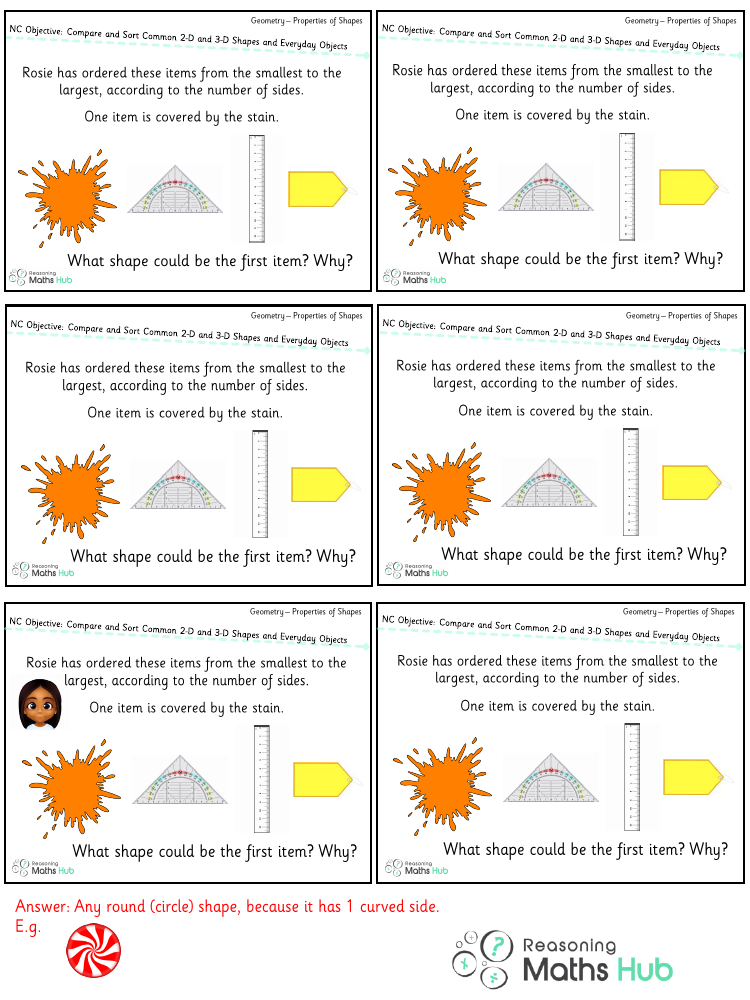Compare and sort common 2d and 3d shapes and everyday objects - Reasoning

Maths Resource Description
In a mathematics lesson aimed at developing students' understanding of geometry, the task at hand involves comparing and sorting a variety of common two-dimensional (2D) and three-dimensional (3D) shapes, as well as objects that students encounter in their daily lives. The reasoning component of this lesson encourages students to examine the properties of shapes, such as the number of sides, vertices, and faces, as well as to consider the shape's dimensions and symmetry. By engaging in comparison, students learn to identify similarities and differences between shapes, leading to a deeper comprehension of geometric concepts and vocabulary.
Sorting activities in the lesson provide a hands-on approach to reinforce learning. Students may be asked to group shapes and objects based on specific criteria, such as the type of shapes (circular, polygonal, polyhedral), dimensions (2D or 3D), or by properties like the ability to roll or stack. These activities not only enhance critical thinking and problem-solving skills but also help students to make connections between the geometric shapes they study in class and the real-world objects they interact with. Through discussion and collaborative work, students develop their reasoning skills and are able to articulate the rationale behind their sorting decisions, further solidifying their understanding of geometric concepts.
